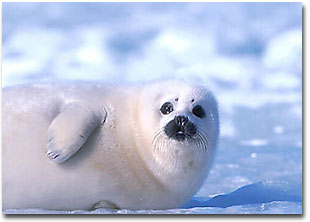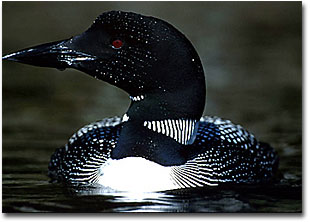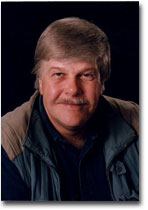|
|
 The Camera Hunter®
All rights reserved. Exposure Setting by More Than Smoke and Mirrors The most critical element for a successful camera hunt, assuming you've found a target to point your camera at, is the proper exposure of your film. You'd better hope that when that black bear steps out of the woods that you've got the exposure right or you're going to waste a lot of film, not to mention the opportunity. All but the oldest cameras have automatic programs to set exposures using witchcraft called matrix metering or some other such name that implies it's all done with smoke and mirrors. While it's true that every SLR has a mirror in it, you'll only see smoke when you really burn film on some critter. And while it's also true that most 35mm cameras have very accurate exposure meters in them, setting the right exposure isn't always as easy as the camera manufacturers would have you believe. Trust Requires Understanding Show of hands: how many of you believe that all you have to do is pick a program mode and the Photo Gods will take care of the rest? Let's call that the smoke and mirrors syndrome. Most of the folks taking the wildlife and nature photography courses I've taught over the years with L. L. Bean's Outdoor Discovery Program actually believe what their camera manufacturer tells them: that they only need to point the thing at a subject while in a program mode and the camera will do the rest. The problem is that they don't notice the words in the manual that say that this works well for photographs of "an average scene".
Adding to the problem is that many wildlife photography opportunities are not even close to being average scenes. Think about it. Is a moose in a brightly reflective pond an average scene? What about an immature bald eagle against a light overcast sky? How about a white-tailed deer against a dark spruce forest or a black bear anywhere? And what do you do to set exposure for a loon that's both black and white? The answer is to understand what's going on inside the camera before you trust any magical metering system will consistently get you the pictures that you want. Smoke And Mirrors Average scenes reflect an average amount of light from the various elements in the frame of the picture that you seek to record on film. It's as simple as that. An average scene reflects light similarly to what is often called an 18% gray. Forgetting all the science for a moment and thinking of 18% gray as reflecting an amount of light halfway between the light reflected by an all-white object and the light reflected by an all black object is a good place to start. Camera meters are calibrated to record the light reflected from 18% gray as an average exposure. You can buy an 18% gray card at some camera stores. If you're serious about camera hunting, and especially if you shoot slide film, which has less ability to record the range of reflected light, you might want to get and learn how to use a gray card. I have one, and I never leave home without it. And I never miss an exposure. Well - almost never. If you use the concept of 18% gray as a starting point, knowing what the meter is saying when you point the camera at a non-average scene becomes much simpler. Use the idea of a gray card metered with a spot meter and it becomes even easier. That's not to say that all pros carry gray cards. Most rely on their experience at seeing light reflect off of "natural gray cards" that they meter in the same light as their subject. Some reliable natural gray cards include: middle toned blue sky directly opposite the sun; middle toned green grass in the spring and summer; and most autumn leaves, either yellow or red.
Other natural exposure guides can help too. For example, most white pines reflect one "stop" less than an average scene. Use that knowledge accordingly and adjust from a reading taken off a white pine by setting one "stop" less exposure to record a deer standing beneath it. Try it with your camera's meter. Test the light reflective qualities of some natural features and learn what you can trust, and more importantly, what you cannot. When you do this test, you need to know how the camera's meter reads the different parts of the picture. Most older meters are center weighted and select exposures from a 10% or so area in the center. On newer cameras you can select spot metering, even down to a 1% spot in the center. Read your camera manual to learn the types of metering it includes. It matters what length lens you're using. Meter with a center weighted meter behind a 400mm lens and you'll wind up setting an exposure for a very small area, similar to using a spot meter. Evaluative or matrix metering in theory takes into account all the areas of the scene, weighs what you're focused on, and ya da ya da ya da. Smoke and mirrors! It works for average scenes and some trickier stuff, but don't ever believe that it will get you a proper exposure when your target is a black bear in a snowstorm. Get out there with a better awareness of what the smoke and mirrors in your camera are doing, and you'll be a lot happier with your results. Catch yours in the good light. BS-NPN 012 Editor's Note - "Provia F, Bald Eagles and Brown Bears" is a special Fuji Pronet Tour to Katmai National Park led by "The Mooseman," Bill Silliker, Jr., June 5 - 14, 2002. For information on this shoot, which will feature nesting bald eagles and coastal brown bears, query The Mooseman at mooseman@mainecoast.net. Comments on this column? Send them to the editor.
Bill has been an instructor of wildlife and nature photography with L. L. Bean's Outdoor Discovery Program since 1992 and is a member of the Fuji Film Talent Team. Bill is a current Board member of the North American Nature Photography Association (NANPA) and a professional member of the Outdoor Writer's Association of America (OWAA). He maintains a web site with tips for wildlife photographers at www.camerahunter.com and is editor of a site for all wildlife enthusiasts at www.wildlifewatcher.com. Bill's work with moose was recently featured on National Public Radio's "Living On Earth", and his book on bald eagles was featured on CSPAN's "Book TV" program. To see the 2001 dates for Bill's "Just Eagles" national slide talk tour for camera clubs and others interested in photographing bald eagles, sponsored by Fujifilm Professional, as well as a schedule of Bill's book signings and workshops with L.L. Bean, click here.
|
|
|
 The newer SLR's have programs that minimize the problems encountered when you point a camera at a scene that is not quite average. But most people don't know a really non-average scene when they see one, and don't know when to trust those fancy programs and when not to.
The newer SLR's have programs that minimize the problems encountered when you point a camera at a scene that is not quite average. But most people don't know a really non-average scene when they see one, and don't know when to trust those fancy programs and when not to. Note that you should look for the middle tones, not the real dark or the real light stuff. I always check the vegetation or rocks when working in a new area, to find natural gray cards that I know I can trust to set exposures from once the action starts (Yellowstone's yellow grasses, Denali's red blueberry tundra, etc.).
Note that you should look for the middle tones, not the real dark or the real light stuff. I always check the vegetation or rocks when working in a new area, to find natural gray cards that I know I can trust to set exposures from once the action starts (Yellowstone's yellow grasses, Denali's red blueberry tundra, etc.). Maine wildlife & nature photographer Bill Silliker, Jr. - The Camera Hunter® - has photographed at many wild places in North America, with the results published in Audubon, Backpacker, Field & Stream; National Wildlife, Outdoor Photographer, Outdoor Life, Sports Afield and many other magazines; in exclusive calendar projects on loons, moose, wildlife and Maine's Baxter State Park, and in his books: Just Eagles; Uses For Mooses; Moose: Giants of the Northern Forest; Just Loons; and Maine Moose Watcher's Guide.
Maine wildlife & nature photographer Bill Silliker, Jr. - The Camera Hunter® - has photographed at many wild places in North America, with the results published in Audubon, Backpacker, Field & Stream; National Wildlife, Outdoor Photographer, Outdoor Life, Sports Afield and many other magazines; in exclusive calendar projects on loons, moose, wildlife and Maine's Baxter State Park, and in his books: Just Eagles; Uses For Mooses; Moose: Giants of the Northern Forest; Just Loons; and Maine Moose Watcher's Guide.